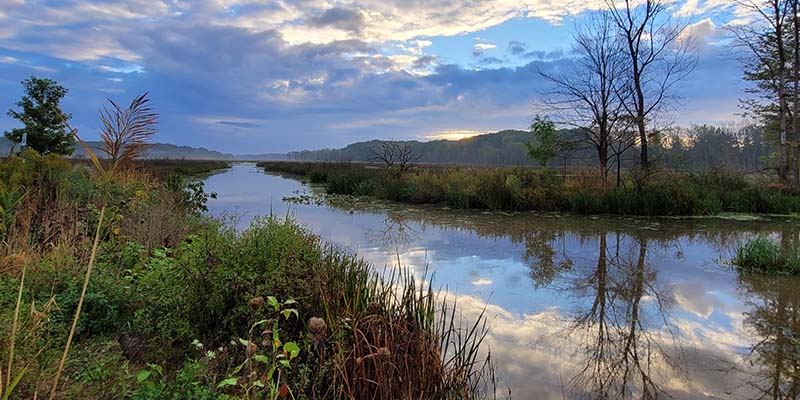
The Ohio Chapter of the American Planning Association (APA Ohio) recently announced winners of the 2022 Ohio APA Great Places awards. The biennial awards program honors outstanding physical spaces that planners have made permanent through careful planning and unbridled imagination in Ohio.
Among the places is the Mentor Marsh State Nature Preserve.
According to a release; the Mentor Marsh is a lively and buzzing place to be! It is maintained, protected and restored by the Cleveland Museum of Natural History, the City of Mentor and the Ohio Department of Natural Resources Division of Natural Areas and Preserves. Throughout the years, the Cleveland Museum of Natural History has acquired over 690 acres of wetland area and manages the majority of the marsh. The marsh is home to many different local plant and animal species. Animals include leopard frogs, northern pike, yellow perch, bald eagles, owls, marsh wren, bitterns, sparrow, river otters, beavers, monarchs, turtles, and so much more. Unique characteristics: Because of the rate of development in Ohio, over 90 percent of wetlands in the state have been drained. In the 1960s, the Cleveland Museum of Natural History obtained the marsh. Today, Mentor Marsh is one of the largest natural marshes that still remains along the shores of Lake Erie. The wetland is situated between Mentor Lagoons and Headlands Beach State Park. This makes the area a great place for different animal and plant species to thrive.
One of the biggest planning initiatives taking place at the Mentor Marsh are the restoration efforts being led by the Cleveland Museum of Natural History. The first major step of the restoration process was to reduce the amount of phragmites in the marsh. With the guidance of restoration ecologists, the invasive plants were sprayed from helicopters with an aquatic-safe herbicide and mashed to the ground to allow native plants to grow through. With the help of staff, contractors, partners, volunteers and inmates, more than 19,000 plants of 23 native species have been planted. As part of a horticulture job skills program at a local prison, inmates collected and propagated seeds to be planted here, while other plants were purchased from sustainable nurseries and seed growers. Aerial seeding was also used to cover the grounds. Because of these efforts, native plants are sprouting, rare birds are returning, frog habitats thrive, fish are utilizing the water as a nursery and the marsh is becoming a stopover habitat for many animals, such as otters, beavers, waterfowl and shorebirds. While the efforts thus far have been very positive, the protection and restoration is not complete. The marsh is currently working with the Ohio EPA to keep the public informed and up to date on the remediation project of the salt fill.
APA Ohio is a statewide, non-profit association of citizens and professional planners committed to promoting and enhancing planning and the quality of planning for all governmental entities in order to maintain and improve the quality of life for all Ohioans.
